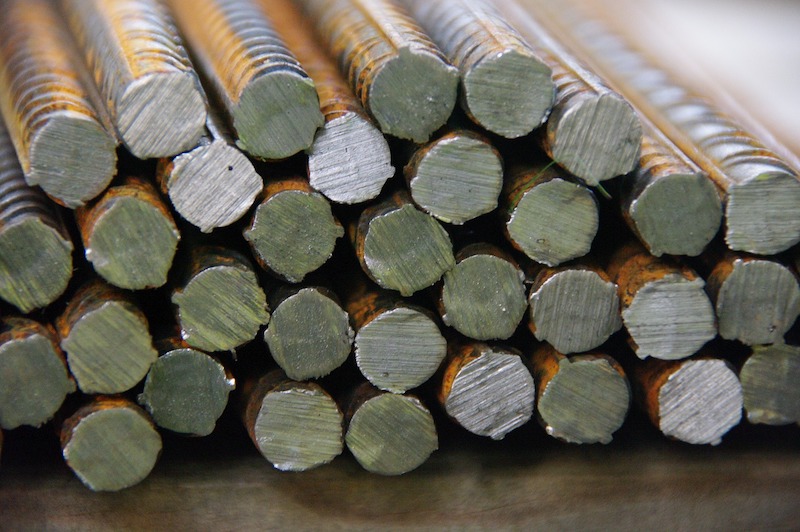The cost of goods and services used in construction climbed by a record-setting 4.3% in May and 24.3% over the past 12 months, jeopardizing contractors’ solvency and construction workers’ employment, according to an analysis by the Associated General Contractors of America of government data released today. Association officials urged the Biden administration to move more quickly to end tariffs and quotas that are adding to construction materials costs and availability problems.
“The increase in producer prices for construction materials over the past year far outstrips contractors’ ability to charge more for projects,” said Ken Simonson, the association’s chief economist. “That gap means contractors are being hit with huge costs that they did not anticipate and cannot pass on.”
The 24.3% increase in prices for materials used in construction from May 2020 to last month was nearly twice as great as in any previous year, Simonson said. Meanwhile, the producer price index for new nonresidential construction—a measure of what contractors say they would charge to erect five types of nonresidential buildings—rose only 2.8% over the past 12 months, as contractors held their profit expectations down in order to compete for a limited number of new projects.
Items with especially steep price increases over the past year covered a wide range of materials, including products made from wood, metals, plastics, and gypsum. The producer price index for lumber and plywood more than doubled—rocketing 111% from May 2020 to last month. The index for steel mill products climbed 75.6%, while the index for copper and brass mill shapes rose 60.4% and the index for aluminum mill shapes increased 28.6%. The index for plastic construction products rose 17.5%. The index for gypsum products such as wallboard climbed 14.1%. Fuel costs, which contractors pay directly to operate their own trucks and off-road equipment, as well as through surcharges on freight deliveries, have also jumped.
Association officials said the Biden administration can provide immediate relief from some of the price pressures by ending tariffs on Canadian lumber, along with tariffs and quotas on steel and aluminum from numerous countries. Officials said the administration took a first step today by announcing agreement on a working group with the European Union that will aim to end to tariffs on steel and aluminum from the EU by the end of 2021 but that much more tariff relief is needed, and sooner. The administration should also end the duty on Canadian softwood lumber, instead of doubling the rate, as the Commerce Department has proposed, the officials added.
“The administration is right to recognize that ending tariffs on our allies is good policy,” said Stephen E. Sandherr, the association’s chief executive officer. “But there is no reason to wait six months to adopt good measures. The president should go further, by ending tariffs and quotas on steel and aluminum from other trading partners as well as the European Union.”
View producer price index data. View chart of gap between input costs and bid prices.
Related Stories
Industry Research | Oct 25, 2016
New HOK/CoreNet Global report explores impact of coworking on corporate real rstate
“Although coworking space makes up less than one percent of the world’s office space, it represents an important workforce trend and highlights the strong desire of today’s employees to have workplace choices, community and flexibility,” says Kay Sargent, Director of WorkPlace at HOK.
Market Data | Oct 24, 2016
New construction starts in 2017 to increase 5% to $713 billion
Dodge Outlook Report predicts moderate growth for most project types – single family housing, commercial and institutional building, and public works, while multifamily housing levels off and electric utilities/gas plants decline.
High-rise Construction | Oct 21, 2016
The world’s 100 tallest buildings: Which architects have designed the most?
Two firms stand well above the others when it comes to the number of tall buildings they have designed.
Market Data | Oct 19, 2016
Architecture Billings Index slips consecutive months for first time since 2012
“This recent backslide should act as a warning signal,” said AIA Chief Economist, Kermit Baker.
Market Data | Oct 11, 2016
Building design revenue topped $28 billion in 2015
Growing profitability at architecture firms has led to reinvestment and expansion
Market Data | Oct 4, 2016
Nonresidential spending slips in August
Public sector spending is declining faster than the private sector.
Industry Research | Oct 3, 2016
Structure Tone survey shows cost is still a major barrier to building green
Climate change, resilience and wellness are also growing concerns.
Industry Research | Sep 27, 2016
Sterling Risk Sentiment Index indicates risk exposure perception remains stable in construction industry
Nearly half (45%) of those polled say election year uncertainty has a negative effect on risk perception in the construction market.
Market Data | Sep 22, 2016
Architecture Billings Index slips, overall outlook remains positive
Business conditions are slumping in the Northeast.
Market Data | Sep 20, 2016
Backlog skyrockets for largest firms during second quarter, but falls to 8.5 months overall
While a handful of commercial construction segments continue to be associated with expanding volumes, for the most part, the average contractor is no longer getting busier, says ABC Chief Economist Anirban Basu.

















